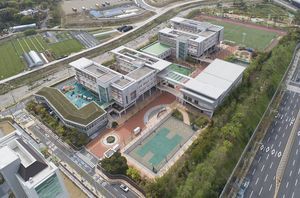ORIGINAL LINK : https://www.asiatoday.co.kr/view.php?key=20240405010003379
|
South Korean military is set to launch the second Military Reconnaissance Satellite (SAR) on the 8th. According to the Ministry of National Defense on the 5th, the second satellite (SAR) will be launched on SpaceX’s Falcon 9 rocket at 8:17 a.m. Monday, Korea time, from Cape Canaveral Space Force Station in Florida.
The second satellite is equipped with a high-performance imaging synthetic aperture radar (SAR), which is designed and developed to to detect signs of North Korea’s nuclear and missile provocations, along with surveilling strategic targets in the terminal area. Development began in October 2018, with the launch being pursued about six years later.
Comprising a main body designed for enhanced mobility to support seamless payload operations, the satellite also features a payload equipped with an imaging radar tailored to fulfill its unique mission objectives. The SAR imaging radar mounted on the payload can capture ultra-high resolution images, enabling all-weather, day and night mission execution unaffected by weather. The main body can quickly maneuver to capture multiple images even in dense areas. A differentiated security system from the civilian sector is applied to the satellite and ground infrastructure, maintaining a high level of military security.
|
According to the Korean Ministry of National Defense’s satellite launch plan, the second satellite will be launched at 8:17 a.m. and enter orbit at 9:01 a.m. It will attempt its first communication with an overseas ground station at 9:11 a.m., followed by its first communication with the homeland at 5:53 p.m. The Ministry of National Defense plans to conduct platform function verification in orbit for the initial two weeks after the launch, and ensure that the satellite’s operational mode is functioning normally.
Under the 425 Project, the military aims to deploy a total of five high-resolution medium-large (800kg~1 ton) military reconnaissance satellites into space by next year, with an estimated expenditure of about $1.1 billion. The first satellite (equipped with EO·IR equipment), was initially launched in December last year, and is expected to be officially deployed for its mission around June to July this year, as it undergoes operational testing and evaluation since March. The military plans to launch the third satellite by the end of this year and add two more satellites next year.
A Ministry of National Defense official said, “The military reconnaissance satellite is a cornerstone to build a defense posture that overwhelms the enemy by contributing to the enhancement of the kill chain capability through the increase in surveillance capability of signs of provocation of terminal area and strategic targets as the core power of intelligence, surveillance, and reconnaissance assets,” and added, “We will lay the groundwork for the leap to a space power by strengthening defense space capabilities and accumulating of domestic satellite development expertise in response to the evolving security landscape, which extends to space.”












Most Commented